Sensor-based Exploration Tree (SET) Method
Exploration of Unknown Environments with Robot Manipulators
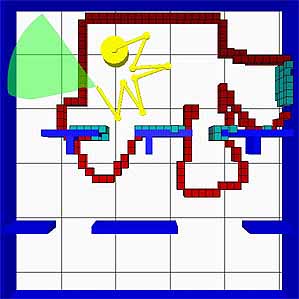
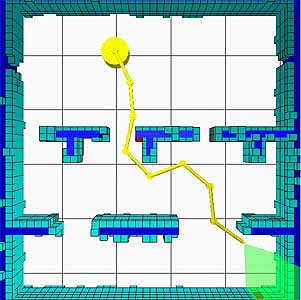
This work presents a method for sensor-based exploration of unknown environments by a robotic manipulator equipped with multiple rangefinders. The method is based on the incremental generation of a data structure called Sensor-based Exploration Tree (SET). The generation of candidate actions is driven by information at the world level, where the perception process takes place. In particular, the free boundaries of the explored region are used to guide the search for informative view configurations. Different exploration strategies are obtained by instantiating the general SET method with different sampling techniques. Two of these are critically compared by simulations in 2D and the 3D worlds.
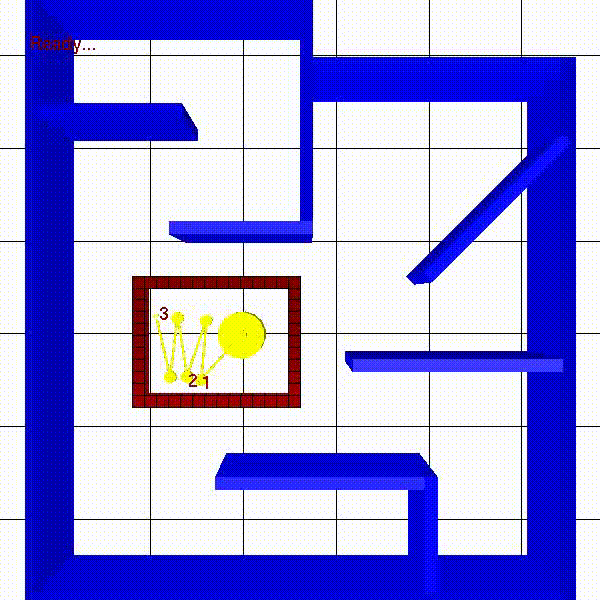
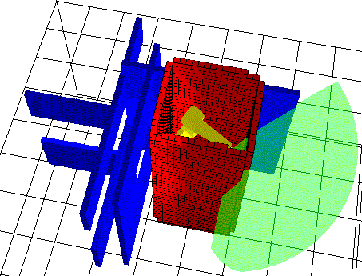
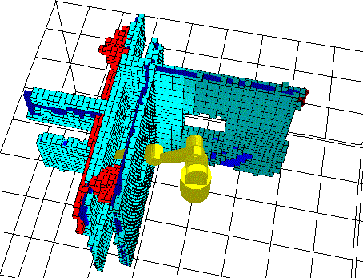
Documents
The SET method has been designed and developed by: L. Freda, G. Oriolo, F. Vecchioli.
More details are given in the following documents:
- L. Freda, G. Oriolo, F. Vecchioli, “An exploration method for general robotic systems equipped with multiple sensors“, 2009 IEEE/RSJ International Conference on Intelligent Robots and Systems, Saint Louis, MO, USA (October 2009)
- L. Freda, G. Oriolo, F. Vecchioli, “Sensor-based exploration for general robotic systems“, 2008 IEEE/RSJ International Conference on Intelligent Robots and Systems, Nice, France (September 2008)
- L. Freda, G. Oriolo, F. Vecchioli, “Exploration Strategies for General Robotic Systems“, DIS Robotics Lab internal report, 2009. This report presents a completeness analysis of the SET method. Abstract: This report presents a novel method for sensor-based exploration of unknown environments by a general robotic system equipped with multiple sensors. The method is based on the incremental generation of a configuration-space data structure called Sensor-based Exploration Tree (SET). The expansion of the SET is driven by information at the world level, where the perception process takes place. In particular, the frontiers of the explored region efficiently guide the search for informative view configurations. Different exploration strategies may be obtained by instantiating the general SET method with different sampling techniques. Two such strategies are presented and compared by simulations in non-trivial 2D and 3D worlds. A completeness analysis of SET method is given in the paper.
Simulations
Realized in Move3D, these simulation clips highlight the essential exploratory qualities of the SET method.
In all the following simulations, exploration is performed by ‘covering’ the world with sensory perceptions. The world is represented by a 3D occupancy gridmap. The boundary of the explored region is shown: this is the union of the obstacle boundary (which represents the reconstructed obstacles, depicted with light-blue cells) and the free boundary (which separates explored and unexplored regions, depicted with red cells).
Simulations with a single rangefinder: the sensor is mounted at the end of the last robot link and is not explicitly shown. The reported number of revolute joints includes additional sensor degrees of freedom (one for 2D worlds, two for 3D worlds).
Simulation 1: planar manipulator with 9 revolute joints (8R +1R).
Simulation 2: planar manipulator with 7 revolute joints (6R +1R).
Simulation 3 and Simulation 4 : planar snake-like robot with 4 revolute joints and a free-flying base (2P+3R+1R).
Simulation 5: manipulator with 6 revolute joints (4R+2R).
Simulation 6: manipulator with 9 revolute joints (7R+2R).
Simulations with many rangefinders: each sensor is mounted on a distinct link and comes with additional degrees of freedom (one for 2D worlds, two for 3D worlds).
Simulation 7: planar manipulator with 6 revolute joints and three rangefinders (6R + 3R).
Simulation 8: planar manipulator with 8 revolute joints and three rangefinders (8R + 3R).
Warning
The material (pdf or multimedia) that can be downloaded from this page may be subject to copyright restrictions. Only personal use is allowed.